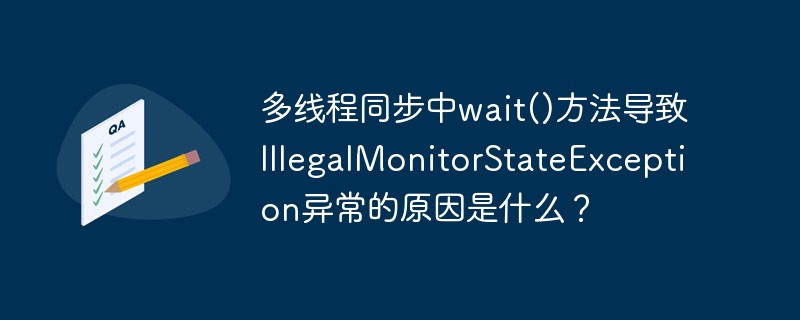
多线程同步与wait()方法异常详解
本文分析一段旨在实现三个线程交替打印自身ID的代码,并解释其中出现的IllegalMonitorStateException异常。该代码尝试使用共享字符串变量current_thread控制线程执行顺序,但由于不当使用wait()和notifyAll()方法导致错误。
以下为问题代码片段:
package 并发编程.work2;
public class Test {
private static volatile String CURRENT_THREAD = "A";
public static void main(String[] args) {
Thread t1 = new Thread(new PrintThreadName(), "A");
Thread t2 = new Thread(new PrintThreadName(), "B");
Thread t3 = new Thread(new PrintThreadName(), "C");
t1.start();
t2.start();
t3.start();
}
static class PrintThreadName implements Runnable {
@Override
public void run() {
for (int i = 0; i < 10; i++) {
synchronized (CURRENT_THREAD) {
while (!Thread.currentThread().getName().equals(CURRENT_THREAD)) {
try {
CURRENT_THREAD.wait();
} catch (InterruptedException e) {
e.printStackTrace();
}
}
System.out.println(Thread.currentThread().getName() + ":" + i);
CURRENT_THREAD = CURRENT_THREAD.equals("A") ? "B" : (CURRENT_THREAD.equals("B") ? "C" : "A");
CURRENT_THREAD.notifyAll();
}
}
}
}
}异常原因分析:
代码的核心问题在于current_thread变量的用法。代码试图将current_thread用作锁对象,并在持有锁的同时修改其值。当一个线程执行current_thread.wait()进入等待状态后,另一个线程修改了current_thread的值。等待线程被唤醒后,它试图在新的current_thread对象上释放锁,而这个对象并非它之前获取锁的对象,因此抛出IllegalMonitorStateException异常。wait()方法要求在持有锁对象的线程上调用,而修改current_thread后,锁对象已改变。
解决方案:
避免在释放锁之前修改锁对象本身。应使用一个独立的、不会被修改的对象作为锁,例如一个Object实例。这样确保所有线程都在同一个锁对象上进行同步操作,避免IllegalMonitorStateException异常。 修改后的代码如下:
package 并发编程.work2;
public class Test {
private static final Object LOCK = new Object();
private static volatile String CURRENT_THREAD = "A";
public static void main(String[] args) {
// ... (rest of the main method remains the same)
}
static class PrintThreadName implements Runnable {
@Override
public void run() {
for (int i = 0; i < 10; i++) {
synchronized (LOCK) { // 使用独立的锁对象LOCK
while (!Thread.currentThread().getName().equals(CURRENT_THREAD)) {
try {
LOCK.wait(); // 在LOCK对象上等待
} catch (InterruptedException e) {
e.printStackTrace();
}
}
System.out.println(Thread.currentThread().getName() + ":" + i);
CURRENT_THREAD = CURRENT_THREAD.equals("A") ? "B" : (CURRENT_THREAD.equals("B") ? "C" : "A");
LOCK.notifyAll(); // 在LOCK对象上唤醒
}
}
}
}
}通过使用独立的锁对象LOCK,解决了IllegalMonitorStateException异常,并保证了线程的正确同步。











